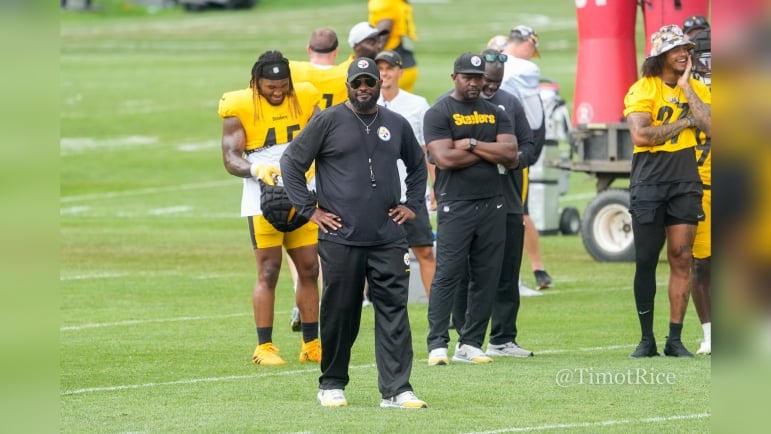There was once upon a time when Mike Tomlin was the hot new young head coach on the circuit, back in 2007 when he first got the job with the Pittsburgh Steelers. While he’s still perceived as one of those coaches who ‘get it’ and can speak to this generation of athletes, he is about as seasoned as you get, entering year 16 as head coach and with college-aged sons to boot.
With that passage of time comes a certain amount of wisdom that he leans upon to aid him in figuring out how to guide each team that he brings into every year. As the calendar flies by, you start recognizing with greater clarity how unique each is, something he discussed on Movin’ the Chains on Friday with Pat Kirwan, Jim Miller, and Paul Alexander on SiriusXM Radio.
“This experience has taught me to let this group reveal itself to me”, he told his hosts. “I’m probably moving a little bit slower in some of those things than I used to. Every group is different. This environment allows me to get the pulse of the development of this group and guide them where appropriate. It’s just been a fun process”.
He was asked about bringing certain themes with him to camp, something that he was known for early on in his coaching tenure, but essentially, he said that he’s learned that the players have to show him which themes ought to dominate as they move along. Responding to the needs of your roster, in other words, rather than expecting it to respond to you and getting the best results from it.
I think there is a certain inherent wisdom in that, even if the reverse might be tempting. Of course, there is going to be some give and take, as you have to have the roster that will respond to you to a certain extent, but especially as you get closer to the ‘finished product’, the group you’re going to bring into the regular season, and the way to get the most out of them is to give them what they need.
They are your guys. They are the ones you have to work with, no matter what you want them to do. The optimal course of action is to get them into positions that will allow them to succeed, and to contribute to the success of the collective.
That starts in training camp by listening to the roster and figuring out what it needs to be nourished and developed into the group that can best achieved the object of winning games, and ultimately, a championship. Imposing a grand concept onto an unknown group without understanding its makeup doesn’t work as well, it seems, or so Tomlin has found over the years.








